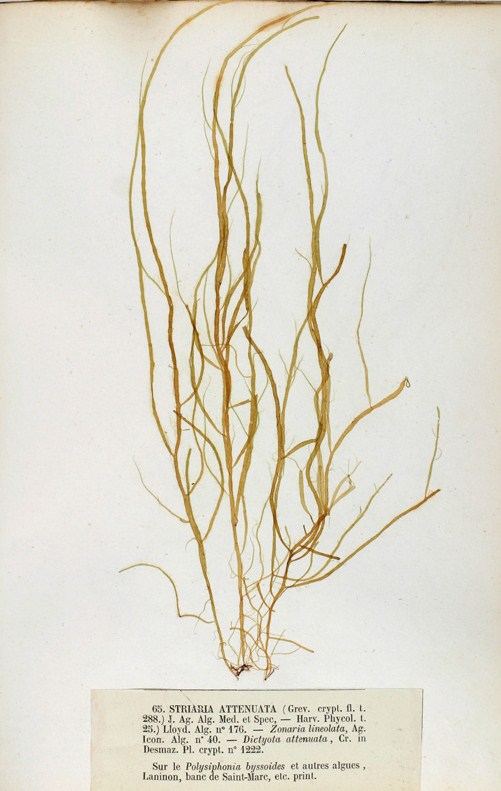
Striaria attenuata
Algae
The brown alga Striaria attenuata has a tubular stalk up to 100 mm which bears thin whorled branches. It is native to the European coast from northern Spain to Norway, including the western Mediterranean. It was discovered in New York in the 1800s (1848-1881) and in Massachusetts in the 1930s. By 1937 it was known to occur from Staten Island to southern Massachusetts. It is likely that its spread along the coast occurred prior to the 1930s because this small and threadlike species is easy to miss. Algae often grow on the bottom of boats and hull fouling was likely responsible for its spread, as well as ballast water discharge and natural dispersal from the introduction site. By 1968 it had made its way to Burton's Bay, VA and later to Chincoteague Inlet, Ocean City, Maryland, and on Smith Island, Northampton County, Virginia, just outside the mouth of Chesapeake Bay. By the mid 1980s it was reported from Newfoundland south to North Carolina. Striaria attenuata is widely introduced in the world, including Chile, Argentina, Australia, New Zealand, and Japan. So far there have been no economic or ecological impacts reported for this species and it remains rare in much of its introduced range.